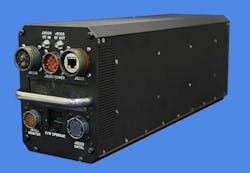Navy Selects Mercury for EA Training Subsystems
As real-world combat conditions grow in complexity, pilots must be prepared. The U.S. Navy has shown its confidence in Mercury Systems and its digital RF memory (DRFM) subsystems by way of a $243.8-million, five-year contract for rapidly reprogrammable electronic attack (EA) training subsystems for the Naval Air Warfare Center Weapons Division. With their DRFM capabilities, the reactive jamming subsystems (see figure) can be quickly reprogrammed for different mission scenarios and aircraft to better simulate real-world combat environments. Mercury has established a solid history with the U.S. Navy’s Airborne Threat Simulation Organization (ATSO) since 1987, having delivered more than 600 radar jamming systems since that time. The latest contract includes engineering services to continually update the subsystems library of threat models for rapid threat identification.
Roya Montakhab, General Manager of Mercury’s Platform Systems business unit, noted: “The electronic warfare capabilities of near-peer adversaries are more sophisticated than ever before, and our combat pilots must train using technology that emulates the most advanced jamming threats.” She added: “We look forward to working with the Navy’s Airborne Threat Simulation Office to provide our pilots with a mission-critical advantage on the battlefield.”
About the Author
Jack Browne
Technical Contributor
Jack Browne, Technical Contributor, has worked in technical publishing for over 30 years. He managed the content and production of three technical journals while at the American Institute of Physics, including Medical Physics and the Journal of Vacuum Science & Technology. He has been a Publisher and Editor for Penton Media, started the firm’s Wireless Symposium & Exhibition trade show in 1993, and currently serves as Technical Contributor for that company's Microwaves & RF magazine. Browne, who holds a BS in Mathematics from City College of New York and BA degrees in English and Philosophy from Fordham University, is a member of the IEEE.
